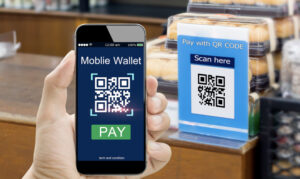Introduction
Welcome to the realm of “Mobile Payments,” where the power to transact lies in the palm of our hands. At its core, mobile payments leverage the capabilities of smartphones and other portable devices to facilitate a diverse array of financial transactions. From everyday purchases and peer-to-peer transfers to bill payments and beyond, the scope of mobile payments extends far beyond the conventional realms of currency and plastic cards. The proliferation of mobile apps, digital wallets, and contactless payment methods, individuals can seamlessly navigate a cashless world, reducing the reliance on physical currency and ushering in a new era of financial convenience.
Key components of this exploration may include:
- Technological Innovations: Understanding how advancements such as block chain, artificial intelligence, and biometrics are shaping the future of mobile payment technologies.
- Digital Wallets: Examining the evolution of digital wallets, their functionalities, and the role they play in facilitating seamless and secure mobile transactions.
- Contactless Payments: exploring the rise of contactless payment methods, such as NFC (Near Field Communication) and QR codes, and their implications for consumer behavior and merchant adoption.
- Crypto currencies: Analyzing the role crypto currencies in the future of mobile payments, including their potential for mainstream adoption and integration into existing payment system.
- User Experiences: Investigating how user expectations and preferences are influencing the design and user experiences of mobile payments applications.
- Security measures: Delving into the ongoing efforts to enhance the security of mobile payments, including advancements in biometric authentication and encryption technologies.
- Global Trends and Adoption: Assessing the adoption rates and regional trends in mobile payments, considering factors such as cultural differences, regulatory environments, and infrastructure development.
- Financial technology Disruption: Examining the influence of fintech startups and innovation on traditional banking and financial institutions in the context of mobile payments.
- Regulatory Landscape: understanding how regulatory frameworks are evolving to accommodate the growth of mobile payments, including issues related to privacy, consumer protection, and interoperability.
- Partnerships and collaborations: Exploring how partnerships between technology companies, financial institutions, and other stakeholders are shaping the mobile payments ecosystem.
Pros and cons for mobile payments
Pros of mobile payments:
- Convenience: Mobile payments offer unparalleled convenience, allowing users to make transactions anytime, anywhere, using their smartphones.
- Speed: Transactions are processed in real-time or near real-time, providing swift and efficient payment experiences.
- Accessibility: Mobile payments increase financial inclusion by providing access to digital financial services for individuals without traditional banking.
- Integration with Other Services: Mobile payment apps often integrate with other services, such as budgeting tools, loyalty programs, and personal finance management.
- Security features: Advanced security features, including biometric authentication, tokenization, and encryption, contribute to a secure payment environment.

- Enhanced Loyalty programs: Many mobile payment apps offer integrated loyalty programs, providing users with discounts, rewards, and personalized offers.
- Global Accessibility: Mobile payments facilitate cross-border transactions, offering a globalized approach to financial transactions.
- Environmentally friendly: Reducing the need for paper receipts and physical transactions contributes to environmental sustainability.
Cons of mobile payments:
- Security concerns: Despite advanced security measures, mobile payments are susceptible to cyber security threats such as hacking, fraud, and identity theft.
- Dependence on technology: mobile payments rely heavily on technology, making users vulnerable to disruptions in network connectivity or device malfunctions.
- Compatibility issues: Different mobile payment platforms may have compatibility issues, limited interoperability between systems.
- Limited Acceptance: In certain regions or businesses, mobile payment acceptance may be limited, requiring users to carry alternative forms of payment.
- Educational Barriers: Some users, particularly in older demography, may face challenges in adopting understanding new mobile payment technologies.
- Risk of Device Loss or Theft: Losing a mobile device or having it stolen poses a risk, as unauthorized individuals may gain access to payment information.
- Transaction Fees: Certain mobile payment platforms may impose transaction fees, impacting the cost-effectiveness of using these services.
- Regulatory challenges: Evolving regulations and varying legal frameworks can pose challenges for the widespread adoption and standardization of mobile payments.
Conclusion
The future of mobile payments reveals a landscape defined by innovation, convenience, and transformative potential. As we stand at the intersection of technology and finance, it is evident that mobile payments are not merely a trend but a fundamental shift in how we perceive and engage with financial transactions. Security, a paramount concern in the digital age, has been a focal point of this exploration. The deployment of advanced technologies, such as biometric authentication and encryption, underscores a collective dedication to creating a secure environment for financial transactions, reassuring users and building trust in the digital realm. However, our exploration has also unveiled challenges that accompany this transformative journey. Concerns regarding privacy, compatibility issues, and the potential for overspending necessitate a nuanced understanding of the complexities woven into the fabric of mobile payments.

